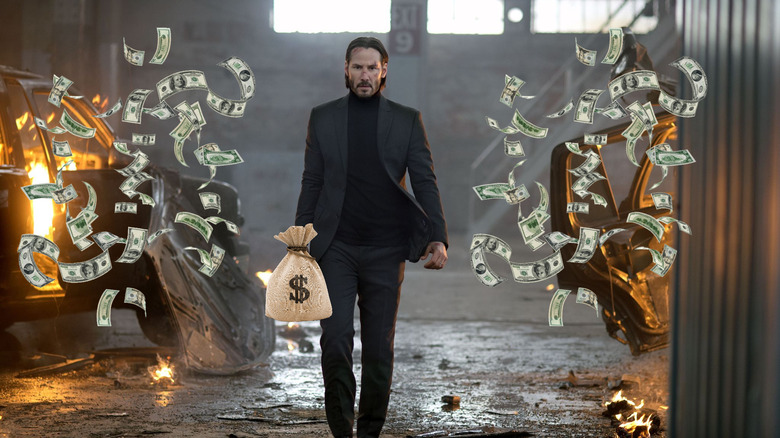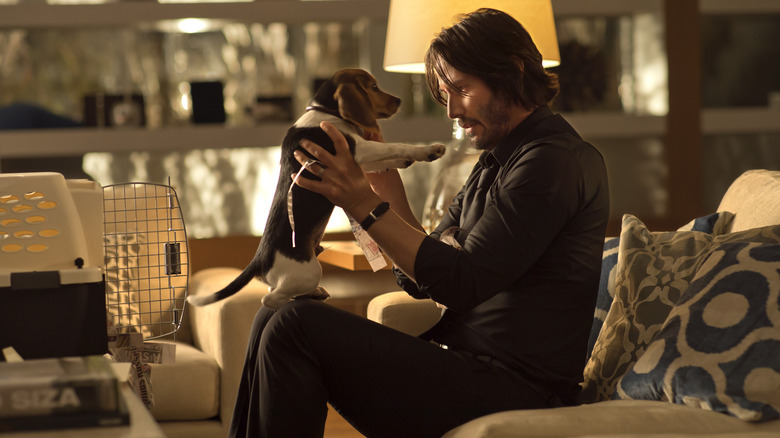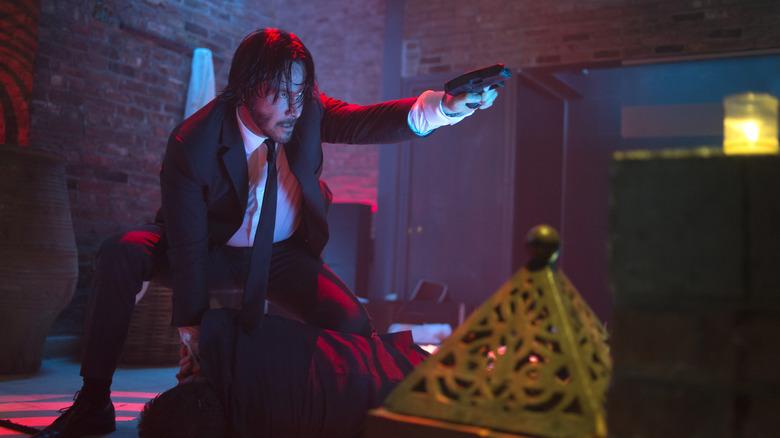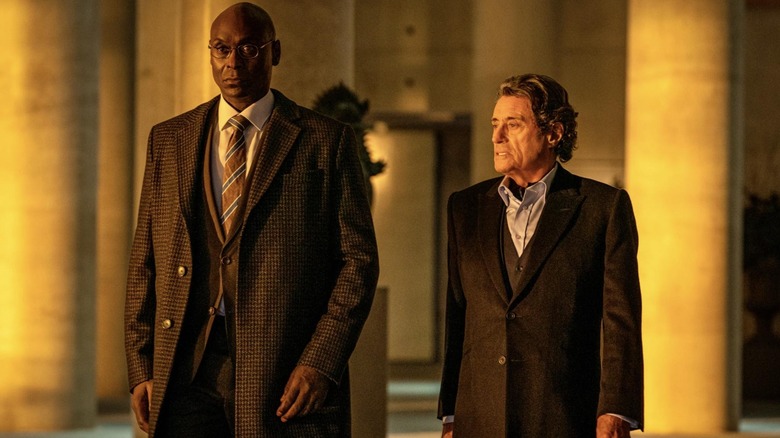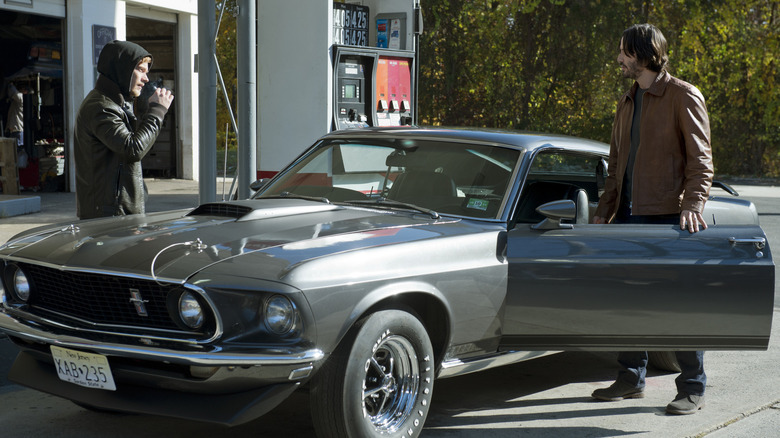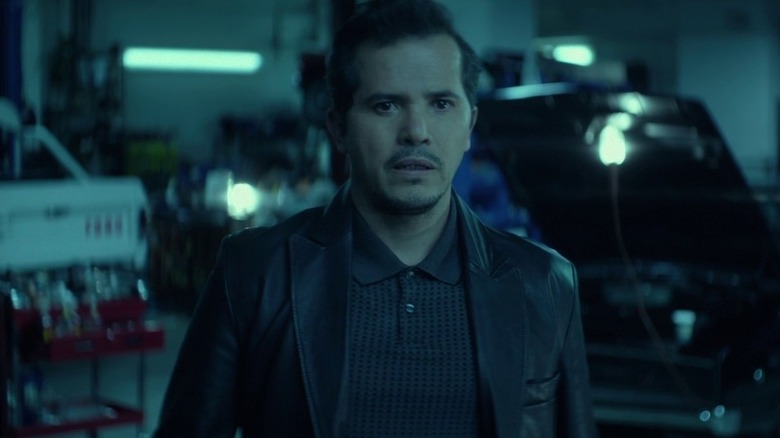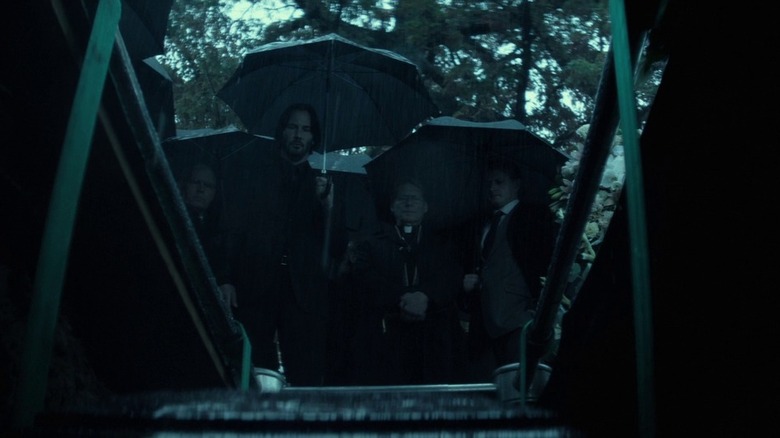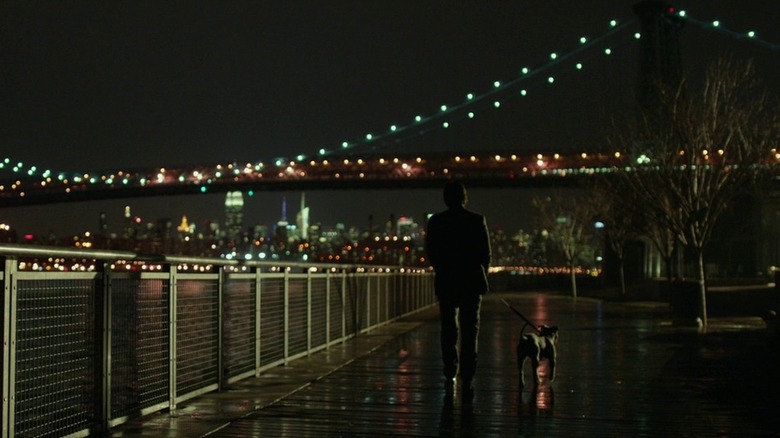Tales From The Box Office: How John Wick Went From Underdog To Action Movie King
(Welcome to Tales from the Box Office, our column that examines box office miracles, disasters, and everything in between, as well as what we can learn from them).
Keanu Reeves was about as big as movie stars get in the late '90s/early 2000s thanks to hits like "The Matrix" propelling him to superstardom. Yet, the trite saying of "the bigger they are, the harder they fall" came calling. By 2010, Hollywood wasn't calling the "Speed" actor anymore, just as he was approaching 50. "It sucks, but it's just the way it is," Reeves explained to IndieWire in 2014. "The last studio movie I did was '47 Ronin,' but before that it had been a long time — probably 'The Day the Earth Stood Still,'" which came out all the way back in 2008. Luckily, his fortunes were about to change in a big way thanks to the little assassin movie that could: "John Wick."
Nearly a decade removed, it's hard to imagine modern action cinema without Mr. Wick, but it's also easy to forget that this film, originally titled "Scorn," seemed destined for VOD with little fanfare mere weeks before it hit theaters. The journey from under-the-radar movie nobody cared about to gigantic blockbuster franchise is a remarkable one. The film centers on Reeves' Wick, reeling from the death of his beloved wife, who receives one last gift from her in the form of a puppy that all but saves his life. However, when John refuses to sell his beloved Mustang to the son of a crime lord, they break into his house and steal it, while also unthinkably killing his dog. And thus, one of the most deadly assassins in history is reawakened. So much for retirement.
In honor of the release of "John Wick: Chapter 4," we're looking back at how the original film came to be, how it pulled itself by its bootstraps mere weeks before its scheduled release to become a wildly unexpected hit, and what we can learn about it in the modern context. Let's dig in, shall we?
The movie: John Wick
Everything about "John Wick" seems to be a recipe for anything but success by typical Hollywood standards. It all goes back to that decision to kill the dog. This is something movies rarely do, because it's a great way to get audiences to turn on you. Directors Chad Stahelski and David Leitch, longtime stuntmen and second-unit directors, knew they were taking a risk. "We were like, 'Oh my god. We killed a puppy,'" Stahelski quipped in an interview with Vulture in 2017. "We just thought a puppy was a more manipulative way to shock the audience," he added. It worked.
But how do we get to the puppy-killing revenge tale? It all started with a script from then-unknown screenwriter Derek Kolstad. His film, which originally focused on an assassin in his 70s, was acquired by Basil Iwanyk's Thunder Road for "pennies" relative to typical prices for scripts. But who to direct? And more importantly, who to star? Reeves had been looking for an action film and signed on somewhat early in the process. As for Stahelski and Leitch, Iwanyk explained:
"Chad and Dave came in and they had a very comprehensive presentation. I mean it was one of the better presentations I've seen from a director in my entire career, and I was like, 'God, this is great.' I walked away thinking, 'How the hell am I going to convince Keanu that this is going to work?' Because he knows these guys. Chad was his stuntman. You know, familiarity breeds a little bit of contempt. As we were trying to figure out what we were going to do, Keanu calls me and is like, 'Listen, I want to respect the process and respect your decision, but I met with Chad and Dave and they have some interesting ideas. I think they could be cool to be first-unit director.' And I'm like, 'Great idea! Perfect.'"
A new take on gun-fu
Stahelski and Leitch had been looking to make the leap to directing for some time. Having worked with Reeves on "The Matrix" previously, knowing that only Keanu Reeves can do what Keanu Reeves does, they finally had their chance. But it wasn't going to be easy, as they were on a tight budget and schedule. To make it work, they were going to have to get creative. Speaking with the MPA ahead of the film's release, Stahelski explained that Reeves' experience in action actually allowed them to pull of the film's signature "gun-fu" action sequences, utilizing longer takes without a lot of quick cuts:
"We didn't do any of the things we normally do cinematically. There aren't a lot of fast cuts. We didn't use a long lens or shaky cam and there are more long takes. Because Keanu could do the stunt work himself, we didn't have to try and hide stunt doubles."
The gun-fu fighting style displayed in "John Wick" is an evolution from Hong Kong action cinema and its grand impresario, John Woo, but Stahelski and Leitch did take it to another level. Reeves trained for four months, learning judo and jiu-jitsu. "We wanted to use practical grappling martial arts and mix in guns, so we created a new style of close-quarter combat," Stahelski added. This was a unique approach that audiences were far from used to at the time, as movies like "Taken" had set the tone for popular action cinema several years prior. This was, admittedly, a radically different approach.
Assassins in New York City
Not content to make things easy on themselves, the directors also insisted on shooting in New York City to realize the world they had envisioned — even if that meant a tighter schedule. Speaking in 2014 to JoBlo, Stahelski explained:
"We could have gotten more money and more resources had we shot in New Orleans, Boston or Chicago or Detroit. The movie took place in New York and we wanted to create a world, and we kind of made it like a Greek myth. We wanted an underworld. Can you tell me one other city that has an above ground underworld? New York is a vertical city and we tried to show it on the anamorphic lenses. So just by the world we wanted to create ... picture that same movie with Willem Dafoe and Keanu talking in front of the French Quarter ... or in front of the Atlanta Superdome? So all the locations, people love those, especially in the second act, the bathhouse, the bridges, and the city. That is New York. That doesn't exist anywhere else."
Indeed, the world that Kolstad's script married with the vision of Stahelski and Leitch imagines is a rich one, with a literal underworld to it all. From The Continental Hotel to the secret codes these seedy dealers of death use in everyday life, it's hard to imagine the final product feeling as fully realized anywhere but NYC. Though, in fairness, the universe has expanded rather effectively around the world in the sequels. But as an entry point? The team had a specific vision in mind.
An unofficial directing duo
What Stahelski and Leitch pulled off was nothing shy of a miracle. They worked together for years on everything from "300" to "Tron: Legacy" in the stunt department and had clearly developed a great working relationship. Unfortunately, when it came time to divide up the credits on "John Wick," there was an issue with the Directors Guild of America. So, despite the fact that they, in practice, co-directed the film, Stahelski was credited solely. Speaking to The Film Stage in 2014, Letich commented on the matter:
"Look, as longtime members of the DGA, it was kind of disappointing that they didn't want to allow us to create a project together in a formal way under their banner. But we went on and collaborated how we were going to collaborate anyways and it's our movie and we're proud of it. If the DGA doesn't want to recognize co-directors then that's their prerogative but we're going to continue to make movies together. We've been making action together for almost 20 years so it doesn't really change. The titles don't change it for us."
Both of them have gone on to have stellar directing careers, with Leitch helming the likes of "Deadpool 2" and "Hobbs & Shaw." Still, the credit issue did sting. Stahelski also shared his two cents on the matter, saying the following:
"We've pretty much said that in the first meeting when we told them we wanted to co-direct. We have a relationship with the DGA and that's going to continue because that's our business. We just hope in the future that they can recognize that when we collaborate together that we would like to be recognized together."
Lionsgate saves the day at the last minute
The fact that Stahelski, Letich, and Reeves put together an incredible film is all good and well. Sure, it doesn't hurt that they also had a stacked ensemble cast, including the likes of Willem Dafoe, Ian McShane, John Leguizamo, Adrianne Palicki, and the late Lance Reddick — every genre project's secret weapon. But does any of that matter without someone to distribute the film? It kind of doesn't, and that was a huge problem for Thunder Road and 87Eleven Productions, who had yet to secure distribution with the October release date creeping up.
Yet, at the 11th hour, Lionsgate stepped in to secure the distribution rights to "John Wick." The deal was finalized on August 11 — just over two months before the film was slated to hit theaters. Was that going to be enough time to launch an effective marketing campaign? Was that going to be enough time to build buzz for a movie from directors nobody had ever heard of, with a star whose best days in Hollywood were seemingly behind him? In this case, the movie Lionsgate acquired largely spoke for itself.
Fortunately, ditching the direct-to-video-sounding title "Scorn" in favor of the titular assassin's name did some work in the lead-up to release to help it sound more Hollywood and less RedBox. It also didn't hurt that buzz began building in a very real way, particularly after an electrifying screening at Fantastic Fest that convinced critics of the world that Keanu was back, and made the directors realize they had made a great movie. Lionsgate did its job, and they pulled this movie up by its bullet-riddled bootstraps.
The financial journey
Despite Lionsgate's best efforts and the unexpected wave of praise from critics, "John Wick" was entering theaters as a major underdog. Projections had the film taking in a mere $7 million against a budget that came in between $20 and $30 million. It also opened directly against Universal and Blumhouse's horror flick "Ouija," which boasted terrible reviews but was the pre-Halloween favorite, for somewhat obvious reasons. Be that as it may, Mr. Wick put up one hell of a fight.
Released on October 24, "John Wick" debuted to a very surprising $14.4 million, coming in at number two on the charts behind "Ouija" ($19.8 million). Lionsgate's action flick benefited from genuine critical buzz and a comeback story for Reeves, leading it to hold very well in the coming weeks. It would go on to finish its run with $43 million domestic and $42.9 million overseas, for a very solid $86 million global haul. But that's just the tip of the iceberg.
Rather crucially, lots of folks discovered "John Wick" on home video. It debuted atop the rental charts and came in second in Blu-ray/DVD sales, trailing only "Dracula: Untold." While the figures are hard to come by, the film earned at least $20 million from digital rentals/sales, and another $48 million to date from disc sales. That benefited the bottom line greatly but, moreover, it gave the sequels an even larger audience, which is what allowed "John Wick: Chapter 2" to open to a massive $30.4 million in 2017, with a $171 million finish — more than doubling the gross of the original. "John Wick: Chapter 3" did even better, opening to $56.8 million on its way to a $327.2 million finish. This sort of thing simply doesn't happen, but the quality of the films could not be denied.
The lessons contained within
Sure, sometimes a sequel can make more than its predecessor, but for each subsequent film in the franchise to pretty much double the film that came before? It's straight-up incredible. What helped as well is that both "Chapter 2" and "Chapter 3" kept the budgets reigned in at $40 million a pop. Lionsgate is one of the best in the business at mid-budget hit-making, and this may be the crown jewel of the studio's accomplishments in that department. Credit to them for saving this one from the depths of direct-to-video hell. Certainly, there is a lesson here in good business and looking for gold in overlooked cracks of the business.
As we are now enjoying "John Wick: Chapter 4" and looking down the barrel of an upcoming spin-off titled "Ballerina," it is also worth looking at how Lionsgate built this into an unlikely franchise with patience. They didn't jump the gun and try to build a cinematic universe. They didn't overspend and under-deliver on quickly produced sequels. They built a world, and trusted the filmmakers to do that in the best way they saw fit. As a result, they have not only a hit franchise, but an enduring one that is part of the permanent lexicon of classics. "Ouija" may have been the bigger hit, but any studio in Hollywood would rather have "John Wick."
Patience is a virtuous trait, as is being fiscally responsible. That patience and responsibility rewarded both Lionsgate and movie lovers around the world with one of the most satisfying modern franchises, brimming with seemingly endless possibilities. This is how you build a universe. This is the template for modern franchise filmmaking, and every single producer or money man in the business would do well to take note of how this little movie built itself up to a blockbuster franchise.
